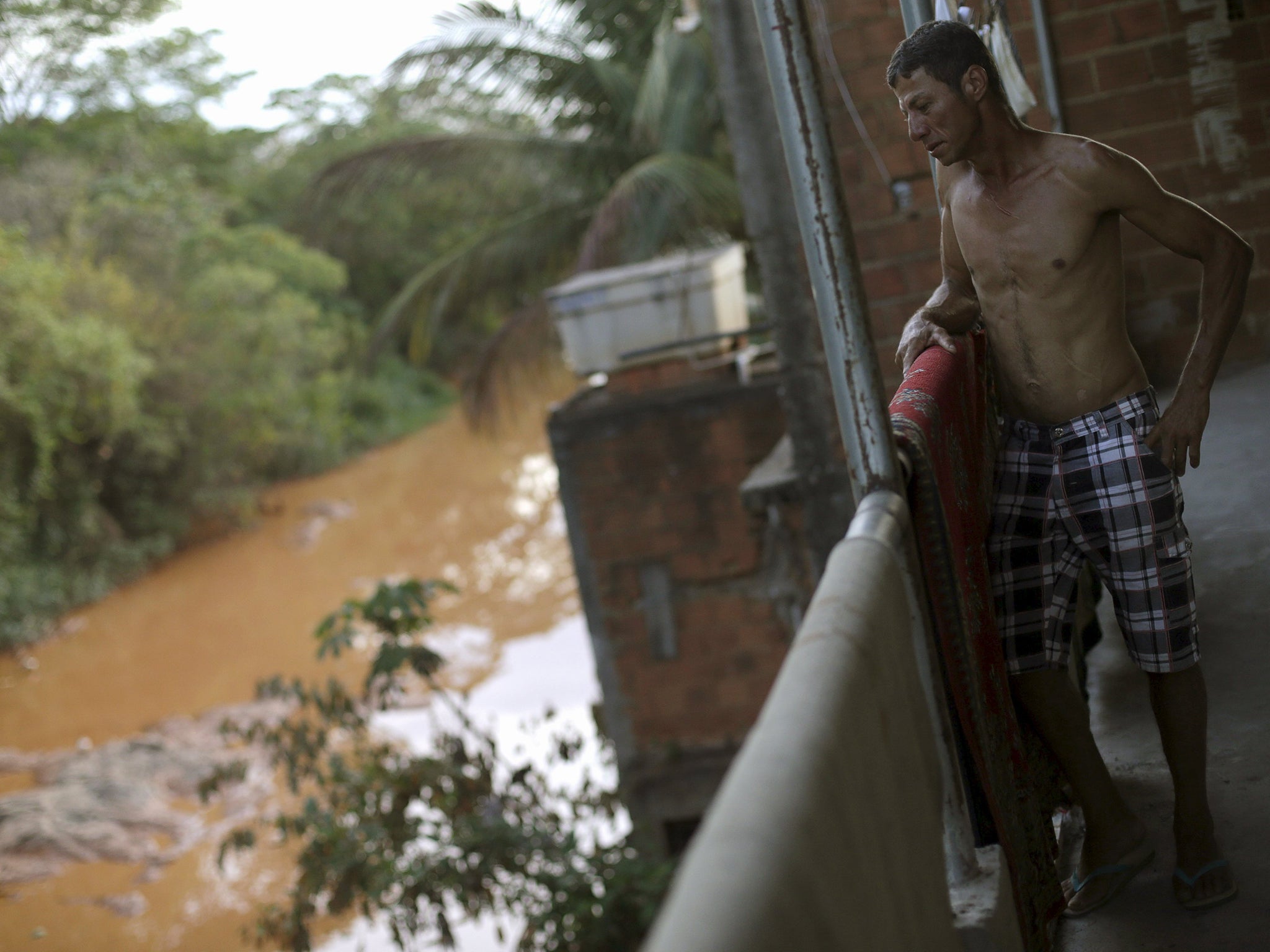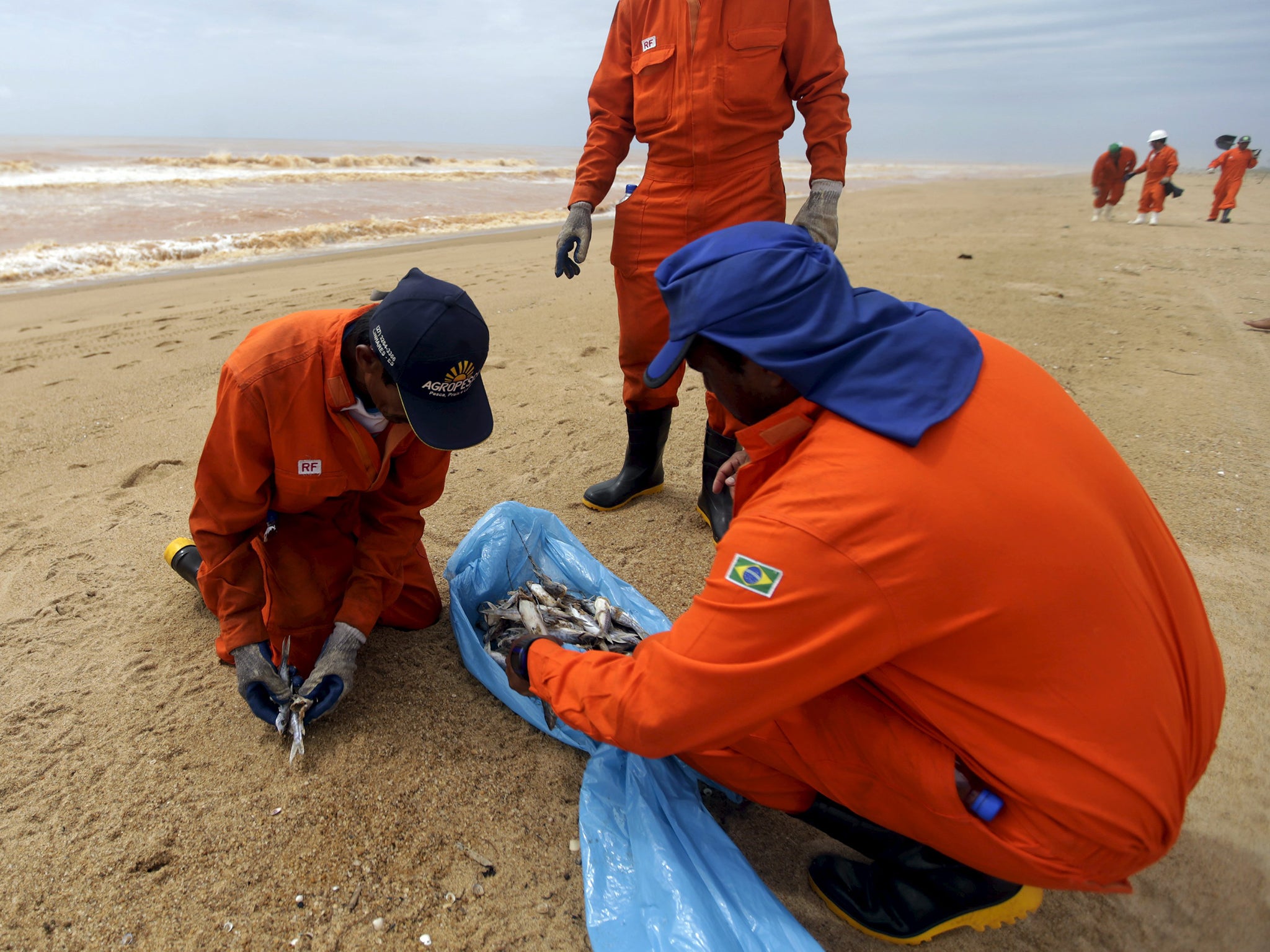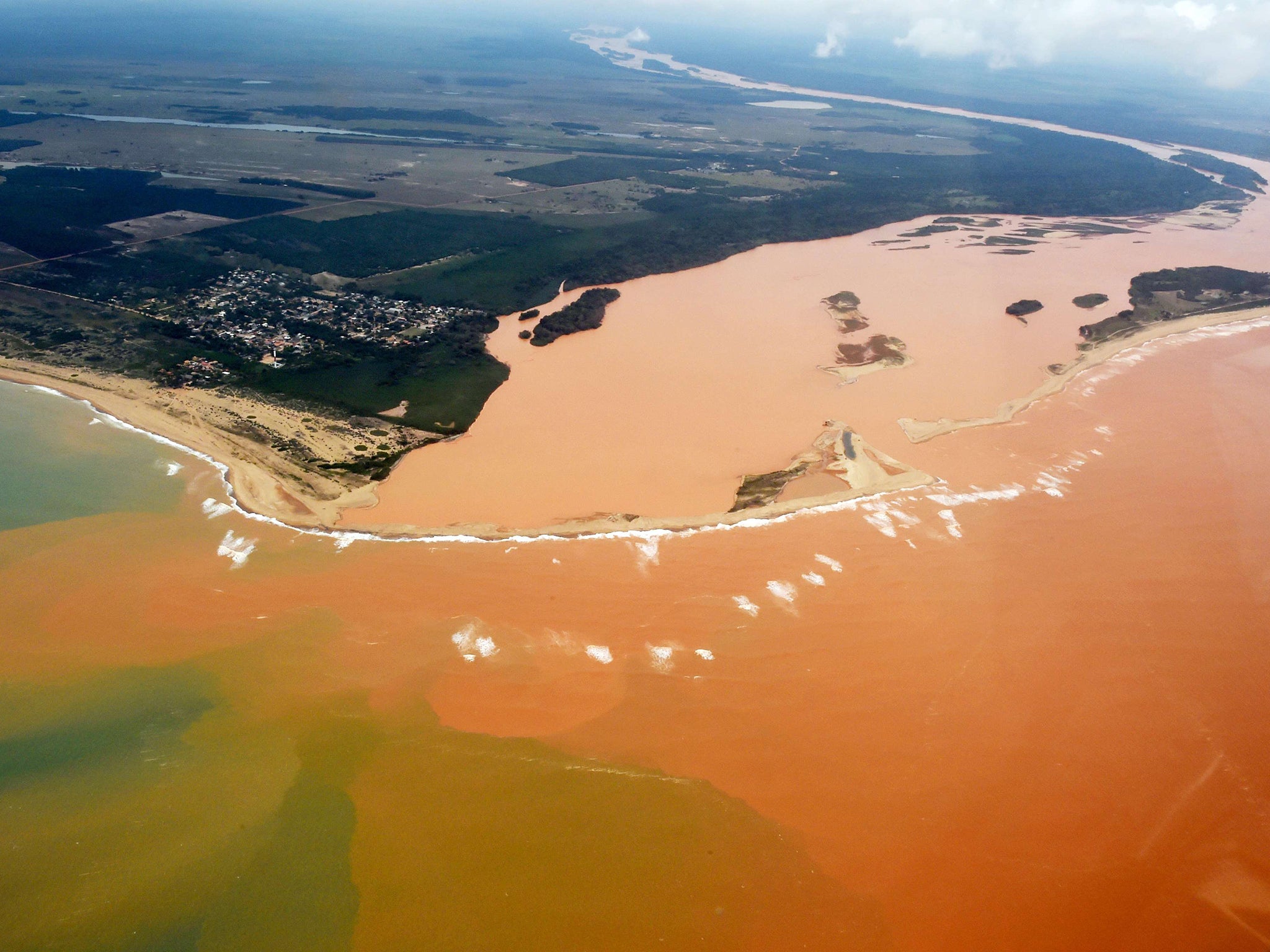Brazil dam burst: Toxic mud flooding towns, says UN
Samarco, the mine operator at the site of the rupture, claimed the water and mineral waste contained by the dam are not toxic

Your support helps us to tell the story
From reproductive rights to climate change to Big Tech, The Independent is on the ground when the story is developing. Whether it's investigating the financials of Elon Musk's pro-Trump PAC or producing our latest documentary, 'The A Word', which shines a light on the American women fighting for reproductive rights, we know how important it is to parse out the facts from the messaging.
At such a critical moment in US history, we need reporters on the ground. Your donation allows us to keep sending journalists to speak to both sides of the story.
The Independent is trusted by Americans across the entire political spectrum. And unlike many other quality news outlets, we choose not to lock Americans out of our reporting and analysis with paywalls. We believe quality journalism should be available to everyone, paid for by those who can afford it.
Your support makes all the difference.Mud from a dam that burst at an iron ore mine in Brazil earlier this month, killing 12 people and polluting an important river, is toxic, the United Nations' human rights agency said on Wednesday.
The statement contradicts claims by Samarco, the mine operator at the site of the rupture, and Samarco's co-owner, BHP Billiton (BHP.AX)(BLT.L), that the water and mineral waste contained by the dam are not toxic.
Citing "new evidence," the UN's Office of the High Commissioner for Human Rights said in a statement the residue "contained high levels of toxic heavy metals and other toxic chemicals".
The agency did not identify the studies that were the basis for the evidence or say who conducted them, and a spokesman in Geneva was not immediately available for comment.
The owners of Samarco, Brazil's Vale SA (VALE5.SA) and Australia's BHP, said they are taking every measure possible to provide emergency assistance to those affected by the dam break and to reduce the social and economic impacts of the disaster.
Samarco said in a statement that both pre- and post-disaster tests show the mud released in the dam burst, made up mostly of water, iron oxides and silica or quartz, presents no danger to human health and does not contain water contaminants.
BHP reiterated on Thursday the tailings that entered the Rio Doce were made up of clay and silt from processing earth containing iron ore and were "chemically stable".
"They will not change chemical composition in water and will behave in the environment like normal soils in the catchment," BHP said, meaning that any metals in the sediment were non-reactive and would not leach into water.

BHP declined to comment on the UN's report as it had not seen it, but said it was trying to contact the UN's rapporteur to understand his comments.
While iron and manganese levels in the mud are above normal, Samarco said, they are below dangerous levels.
Biologists have been shocked by the impact of the burst dam, which Brazil's government has called the country's worst-ever environmental disaster.
The mud has killed thousands of fish as it flows through the Rio Doce, the river which connects the mineral-rich state of Minas Gerais with Espirito Santo on the Atlantic coast.

BHP said the fish were most likely being choked to death by the sheer volume of fine sediment released by the dam burst clogging their gills, rather than the chemical composition of the sludge.
"Based on the evidence available, the concentration of sediment suspended in the water in the Rio Doce, as a result of the tailings being released, was high enough to starve the fish of oxygen," a BHP spokesman said.
The 60 million cubic meters of mine waste, equivalent to 25,000 Olympic swimming pools, cut off drinking water for a quarter of a million people. The dense orange sediment has now reached the ocean.
The huge volume of sediment in the water is the same factor that has overwhelmed water treatment plants along the Rio Doce and led Samarco to supply 100 million liters of drinking water and mineral water to towns along the river.
The UN statement criticized the response of the companies and the Brazilian government as "insufficient," saying, "the government and companies should be doing everything within their power to prevent further harm".
Reuters
Join our commenting forum
Join thought-provoking conversations, follow other Independent readers and see their replies
Comments